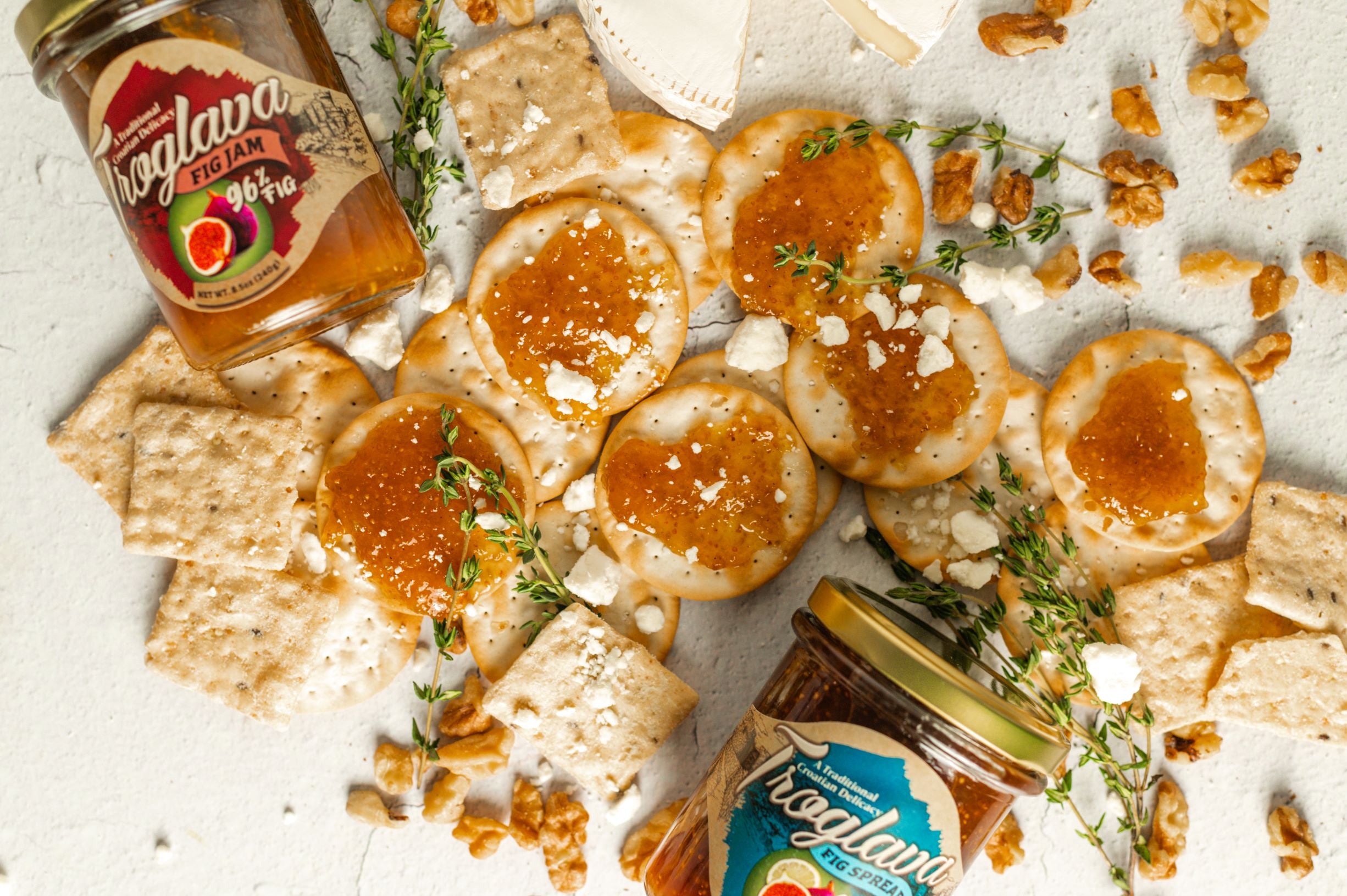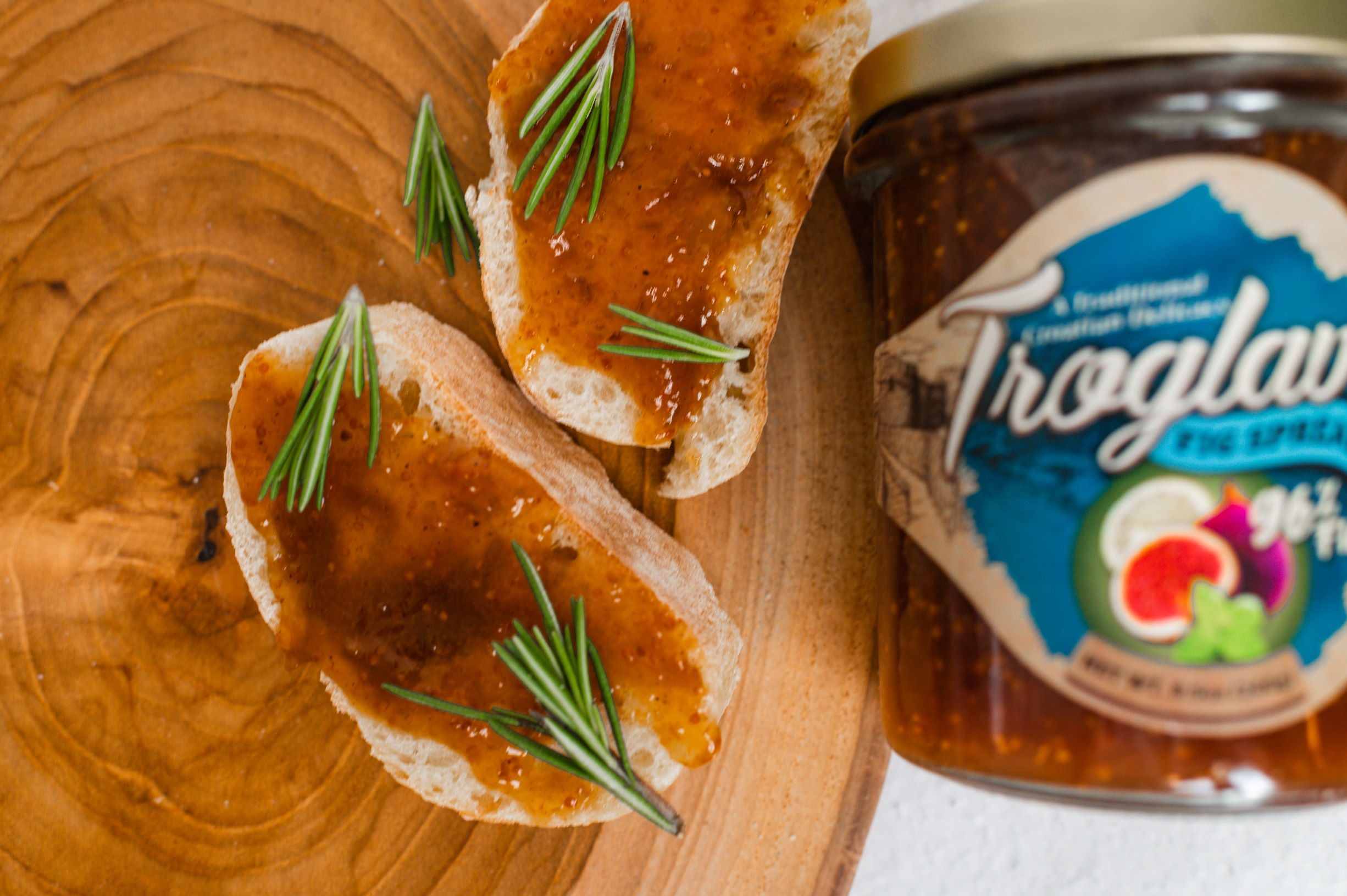Most fig products have a laundry list of ingredients that dilute the taste and quality. We keep it simple: 96% of our jams/spreads are simply the figs themselves, with a small amount of other ingredients. Our jams and spreads serve as a sweet complement to your morning toast or charcuterie board, filled with antioxidants and vitamins to help justify the amount of this heavenly goodness you will be using.
Fig jam is a sweet spread made from cooked figs, sugar, and sometimes other. The figs are typically simmered until they break down and form a thick, spreadable consistency, with their natural pectin helping to create the jam-like texture. This preserve captures the rich, honey-like sweetness of fresh figs and is commonly enjoyed on bread, scones, or cheese boards, particularly paired with soft cheeses like brie or goat cheese.
What is the difference between fig jam and fig spread?
A fig jam or preserve must contain at least 45 parts by weight of fig to 55 parts by weight of sweetener, and must have a final soluble solids content of at least 65%.
Based on this regulation (21 CFR 150.160), there is actually no standardized definition for "fig spread" - only for fig preserves and fig jams. Fig spreads often won't meet the requirements of fig jam, and will include other ingredients such as lemon juice, honey, or additional spices and sugars.
What's the difference between OUR fig jam and fig spread?
In a world where fig jams and fig spreads often hide behind a veil of sugar, with fruit content barely reaching 50%, Troglava stands defiantly different. While most manufacturers dilute their products with sweeteners to cut costs and mask inferior ingredients, we've taken the bold path of letting figs speak for themselves.
At an astounding 96% fig content - a ratio that makes other producers do a double-take - our spreads and jams capture the pure, unadulterated essence of this ancient fruit. We're not just making fig jams and spreads; we're preserving a legacy of flavor that dates back to the dawn of agriculture, letting the natural sweetness and complexity of figs shine through in every jar.
What are fig preserves and how are they different?
Fig jam and fig preserves each bring their own character to the table. With its smooth, spreadable consistency, fig jam is perfect for recipes that call for an even distribution of flavor - think delicate pastry fillings, layer cakes, or a clean sweep across your morning toast.
Fig preserves take a different approach, maintaining the integrity of the fruit with visible pieces of fig that add both texture and visual appeal. These larger chunks make preserves particularly well-suited for cheese boards or situations where you want to showcase the natural beauty of the figs themselves.
What are some recipes that use fig jam?
Here are some popular ways to use fig jam:
Breakfast & Brunch:
- Fig and brie grilled cheese on sourdough
- Whipped ricotta and fig jam toast with honey and thyme
- Yogurt parfait layered with granola and fig jam
- French toast topped with fig jam and mascarpone
Appetizers:
- Crostini with goat cheese, fig jam, and prosciutto
- Baked brie en croute with fig jam filling
- Cheese board featuring fig jam paired with blue cheese or aged cheddar
- Fig jam and caramelized onion flatbread
Main Dishes:
- Roasted pork tenderloin glazed with fig jam and balsamic
- Grilled chicken sandwich with fig jam, arugula, and goat cheese
- Pizza topped with fig jam, caramelized onions, and gorgonzola
- Ham and brie panini with fig jam
Desserts:
- Fig jam thumbprint cookies
- Vanilla cake layers filled with fig jam and cream cheese frosting
- Fig jam swirled cheesecake
- Almond tart with fig jam filling
Use left/right arrows to navigate the slideshow or swipe left/right if using a mobile device









